
Conus lividus, common name the livid cone, is a species of sophisticated predatory sea snails, marine gastropod molluscs in the family Conidae, the cone snails, cone shells or cones.

Conus litoglyphus, common name the lithograph cone, is a species of predatory sea snail, a marine gastropod mollusk, more popularly known as a cone snail, cone shell or cone.

Conus guinaicus is a species of predatory sea snail, a marine gastropod mollusk. It is part of the genus Conus, more popularly known as cone snails, cone shells or cones.

Conus arenatus, common name the sand-dusted cone, is a species of sea snail, a marine gastropod mollusk in the family Conidae, the cone snails and their allies.
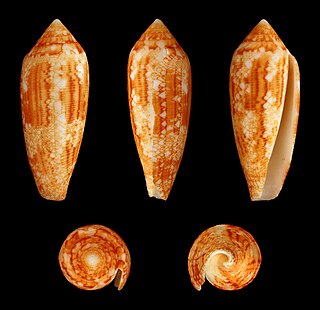
Conus aureus, common name the aureus cone, is a species of sea snail, a marine gastropod mollusk in the family Conidae, the cone snails and their allies.
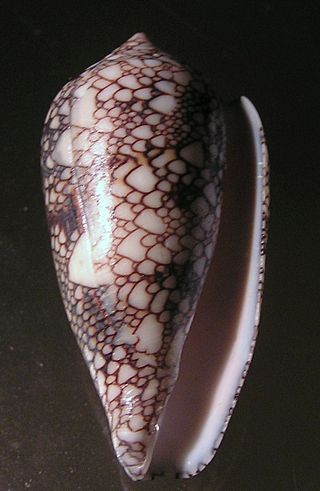
Conus canonicus, common name the tiger cone, is a species of sea snail, a marine gastropod mollusk in the family Conidae, the cone snails and their allies.
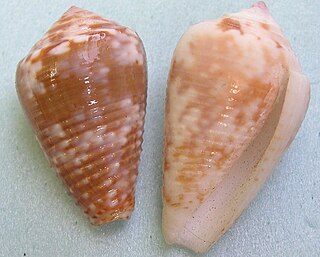
Conus catus, common name the cat cone, is a species of sea snail, a marine gastropod mollusk in the family Conidae, the cone snails and their allies.

Conus distans, common name the distant cone, is a species of sea snail, a marine gastropod mollusk in the family Conidae, the cone snails and their allies.
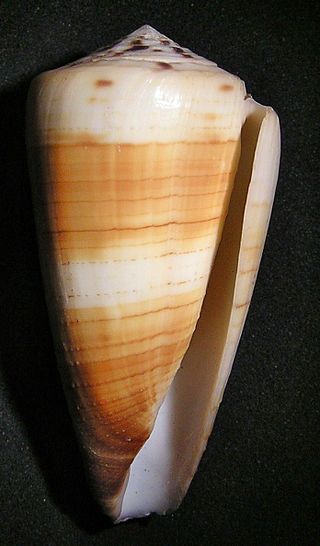
Conus ferrugineus is a species of sea snail, a marine gastropod mollusk in the family Conidae, the cone snails and their allies.

Conus glans, common name the acorn cone, is a species of sea snail, a marine gastropod mollusk in the family Conidae, the cone snails and their allies.

Conus miliaris, common name the thousand-spot cone, is a species of sea snails, marine gastropod molluscs in the family Conidae, the cone snails and their allies.
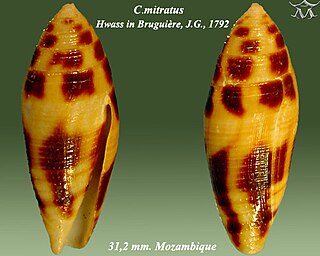
Conus mitratus, common name the mitred cone, is a species of sea snails, marine gastropod molluscs in the family Conidae, the cone snails and their allies.

Conus musicus, common name the music cone, is a species of sea snail, a marine gastropod mollusk in the family Conidae, the cone snails and their allies.

Conus nimbosus, common name the stormy cone, is a species of sea snail, a marine gastropod mollusk in the family Conidae, the cone snails and their allies.

Conus omaria, common name the Omaria cone, is a species of sea snail, a marine gastropod mollusk in the family Conidae, the cone snails and their allies.

Conus pertusus, common name the pertusus cone or the lovely cone, is a species of sea snail, a marine gastropod mollusk in the family Conidae, the cone snails and their allies.

Conus pulicarius, common name the flea-bitten cone, is a species of sea snail, a marine gastropod mollusk in the family Conidae, the cone snails and their allies.

Conus rattus, common name the rat cone, is a species of sea snail, a marine gastropod mollusk in the family Conidae, the cone snails and their allies.

Conus suratensis, common name the Surat cone, is a species of sea snail, a marine gastropod mollusk in the family Conidae, the cone snails and their allies.
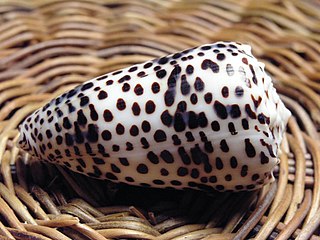
Conus eburneus, common name the ivory cone, is a species of sea snail, a marine gastropod mollusk in the family Conidae, the cone snails and their allies.






















